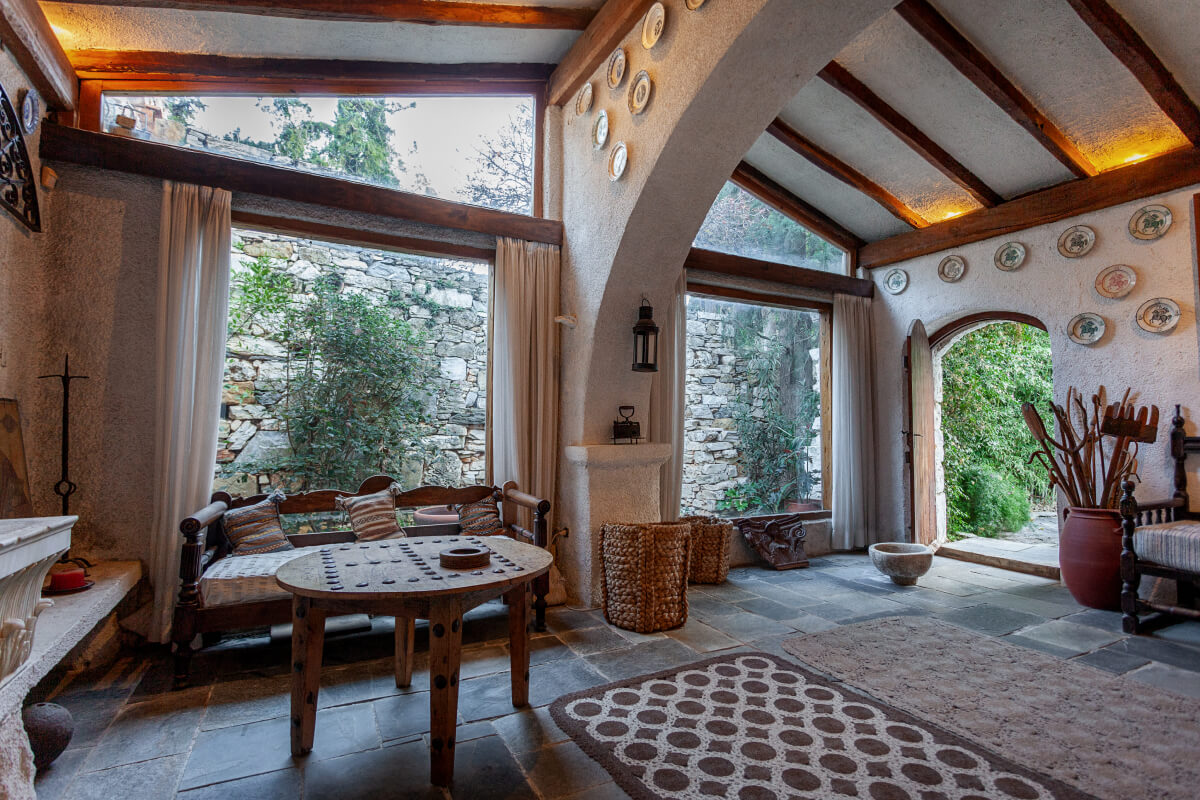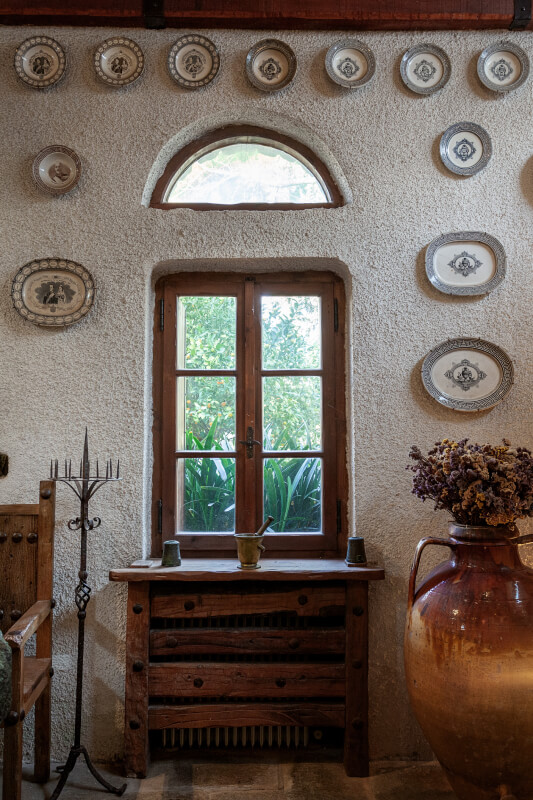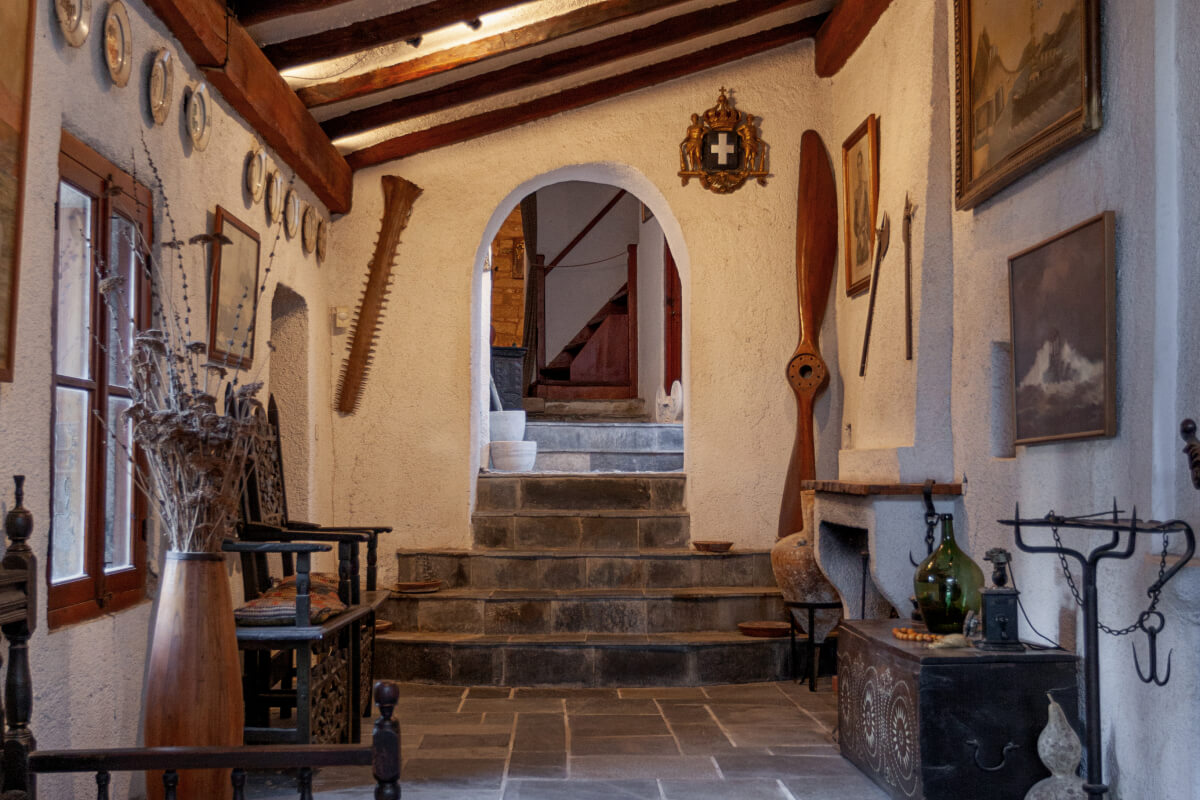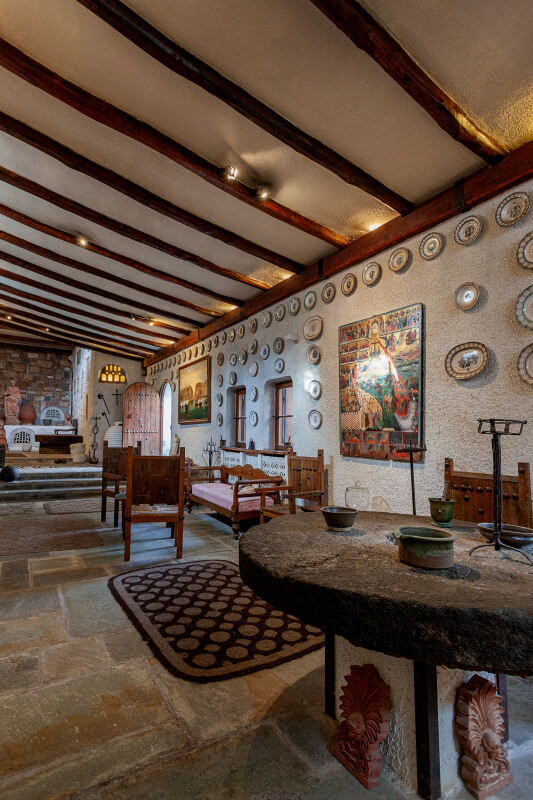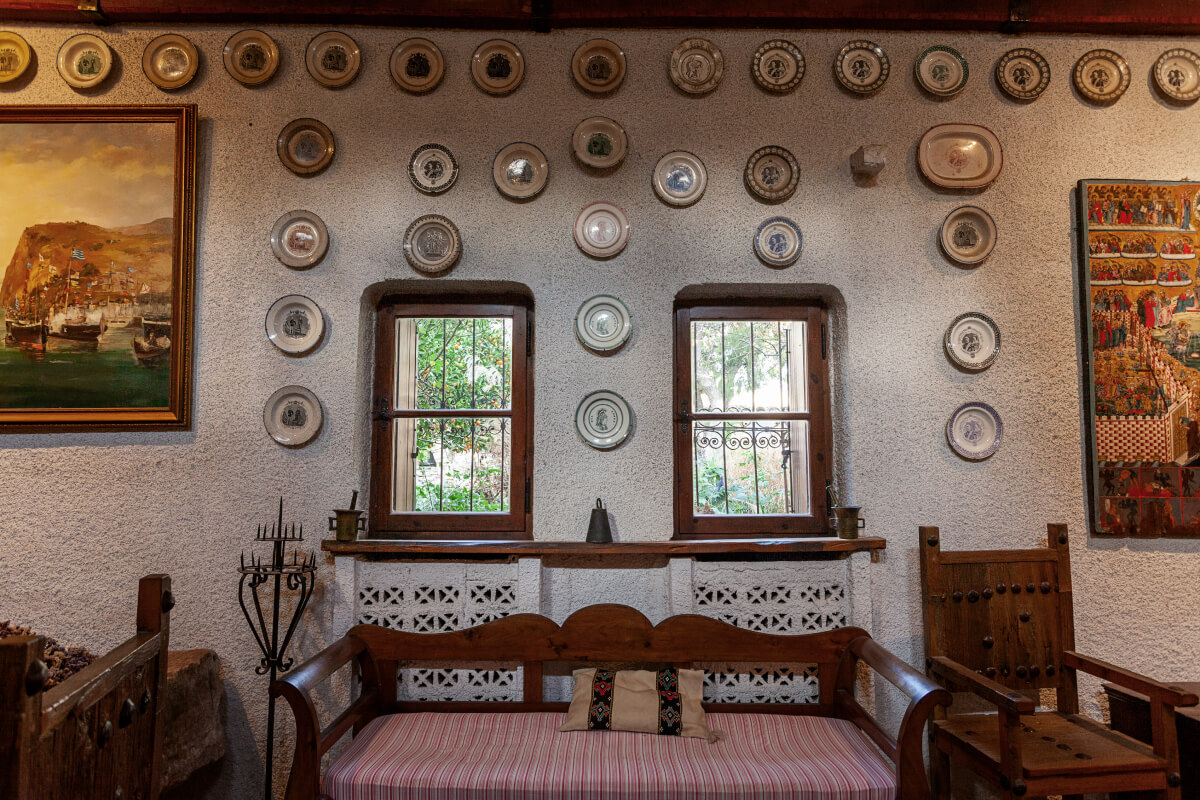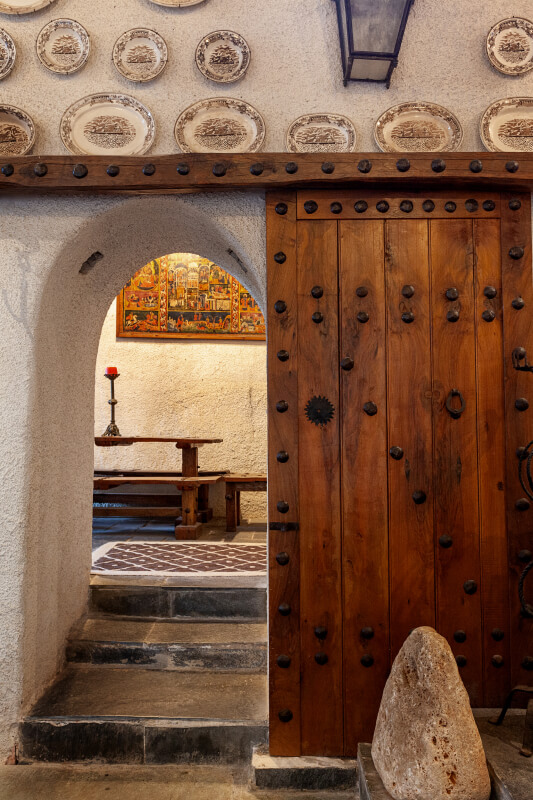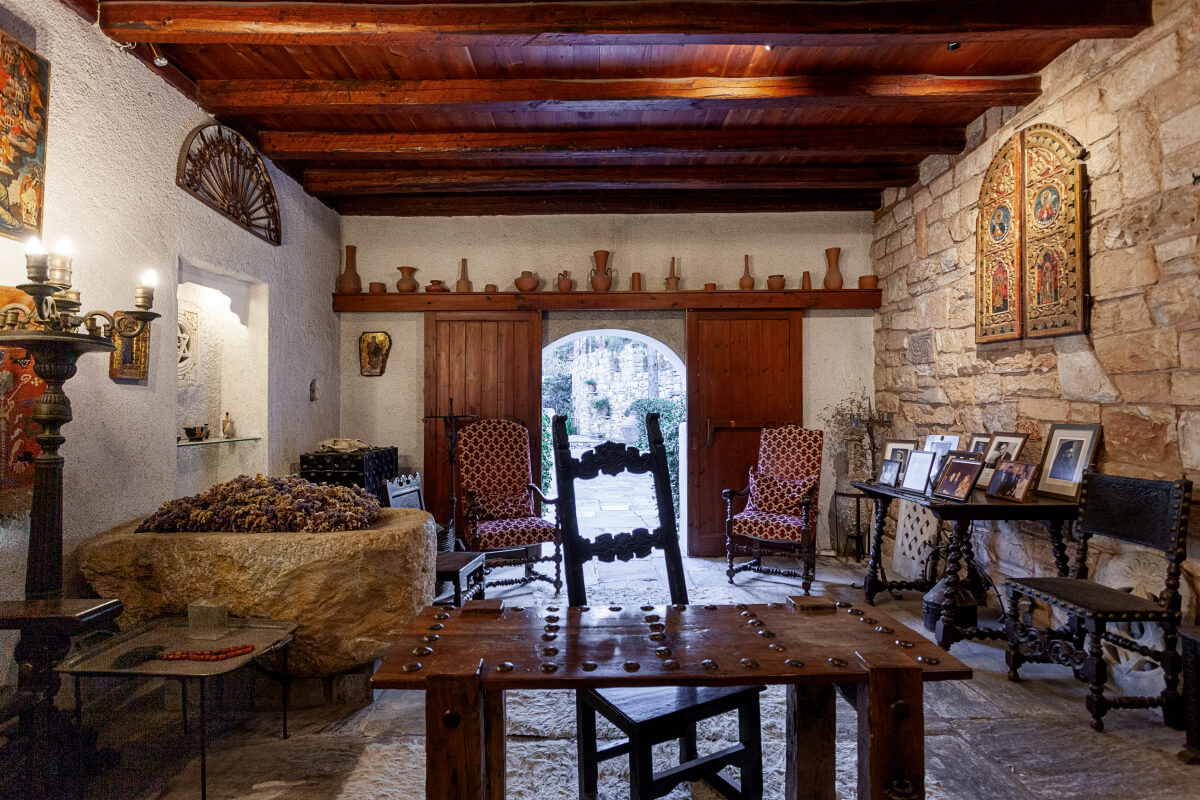Pyrgi
A tribute to the eternal spirit of Greece
Pyrgi is a personal vision that has come true. It is a vision of the subtle, graceful elegance and beauty of traditional Greece in all its architectural and decorative variations. It took over forty years of continuous work with the help of local artisans to turn the vision into reality, a reality which constitutes a personal tribute to the eternal spirit of Greece.
Pyrgi, meaning “Tower”, so named because of two tower-like buildings that are its architectural highlights, consists of two traditional village houses and the remnants of a stable that date back to the beginning of the 18th and early 19th centuries. Originally the structures were separate, but they have been joined together in such a way that the new buildings cannot be told apart from the old, because the new construction was also done in the traditional Greek peasant way.
It is important to remember that Pyrgi is not a careful and exact reconstruction of old Greek peasant houses. It is rather a re-adaptation and readjustment of traditional Greek architectural features, and of popular artifacts and objects used in daily Greek life, to reveal their inherent beauty and their practical use.
Pyrgi features Greek peasant artifacts, rare furniture, characteristic carpets, village troughs, jars, millstones, wrought iron, an important collection of ceramics, paintings and prints pertaining to the early history of modern Greece, as well as several important items from antiquity and an interesting collection of Byzantine and post-Byzantine icons from various areas of Greece.
Pyrgi also offers a few examples of rare foreign furniture (e.g. early 18th and 19th century Italian, French and Spanish). This is in keeping with Greek decorative tradition. Greek sea captains in the 18th and 19th centuries used to decorate their homes, especially in the Aegean islands, with fine furniture bought in Europe during their travels.
The gardens are an indispensable part of Pyrgi and there is open inter-communication between the buildings and the outdoors. Among the main features of the gardens are the surrounding walls built by the traditional “xerolithia” (dry-stone) method, a Greek peasant art which has almost disappeared in our times. The gardens themselves are basically wild, featuring typical Greek flora such as cypresses, pines, laurels, Judas trees, lemon and orange trees, bougainvilleas, geraniums, lavender, etc. Moreover they have been enriched with numerous antique and popular artifacts.
Pyrgi has been described in numerous publications in Greece and abroad as one of the most beautiful and original houses in the world. As such it serves both as a glorification of Greece’s past and as a plea to contemporary Greeks to save and preserve their heritage.
“A home’s essence lies in its permanence” H.L. Mencken once said. The essence of Pyrgi is the permanence of the Greek spirit throughout the ages.
“Beauty is truth, truth beauty”, John Keats declared in his famous “Ode on a Grecian Urn”. This simple yet eternal truth is the ultimate message of Pyrgi to the world.
Ian Vorres,
Founder of the Vorres Museum.
Discover
Museum
The Vorres Museum, is an expansive cultural hub that harmoniously blends Greece’s traditional folk heritage with its contemporary art scene.
Gallery
The collection emphasizes the evolution of Greek art from the 20th century to today and it features painting, sculpture and mixed-media pieces, offering a comprehensive view of the Greek modern art scene.
Gardens
The museum’s expansive outdoor areas are an integral part of its charm. Spread across multiple levels, the gardens are home to a variety of Mediterranean plants and sculptures.
J. Spyropoulos wing
The Vorres Museum also houses the Jannis Spyropoulos Museum and Art Collection, which is dedicated to the work of one of Greece’s most renowned abstract expressionist painters.
